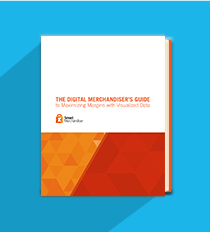With the countless distractions and online shopping alternatives available to today’s ecommerce customer, if you don’t capture their attention immediately, they’re likely to lose interest and move on. And that’s why strong design and effective merchandising are so crucial to the success of your online business. Here are a few key tips on best practices when it comes to ecommerce design.
Quality Images
Using your own images is a great way to both put your personal stamp on your merchandise while providing the customer with a better overall shopping experience. After all, is there anything less interesting than a tiny, stale, pixelated product image that was provided by the manufacturer? Use high quality photos that are appealing to the eye. And try to provide as much detail as possible. Since your customers can’t reach out and touch your products, you want to provide them with the next best thing by giving them hi-res product images from as many angles as possible.
Consistent Images
Another key aspect of creating good product images is making sure they are consistent. Good product photos don’t just represent your inventory, they represent, and visually reflect, the overall feel of your brand. That’s why it’s important to use the same photographer, equipment and techniques (or as close to it as possible) throughout your inventory catalog. This will help create a unified and unique visual identity for your online store and make your brand more memorable, increasing your chances of repeat business.
Mobile First
No matter how stunning your layout looks on a desktop or laptop display, if it’s clunky on your customers’ smartphones and tablets, it’s going to seriously impact your bottom line. If a page takes too long to load, or if navigation is difficult, or the checkout process is too complicated, users will take their business elsewhere. Even something as simple as compressing your image files and minimizing your loading times by switching to scrolling navigation can really improve performance for mobile shoppers.
Simple Navigation
It seems obvious: if a customer can’t find the product, they can’t buy the product. Yet still, day in and day out we encounter ecommerce sites with weird, clunky, or non-existent search functionality. Adding a search bar and/or breaking inventory down into selectable categories will help your customers find what they’re looking for in a hurry. And the faster you can get that product into their cart, the more likely they are to click that Checkout button.
Compelling Content
From fun videos to entertaining blog content, even down to quirky product descriptions, if you’re providing interesting content, customers will remember you, which means they’ll be much more likely to come back.
Take a brand like Vans, for instance. When you visit their site, you see their footwear of course, but you also see opportunities to engage with interactive lifestyle content, live streaming video events, and even in-person house parties and concerts—and it’s all framed by product images and footwear-related tie-ins. Customers might first visit to buy a pair of skateboarding shoes, but they might keep coming back to watch their live-streaming skate competitions. After a while a relationship begins to build between customers and your site. They begin to visit regularly, which means they’re more likely to spot your new products and promotions and spend more money in your store.


